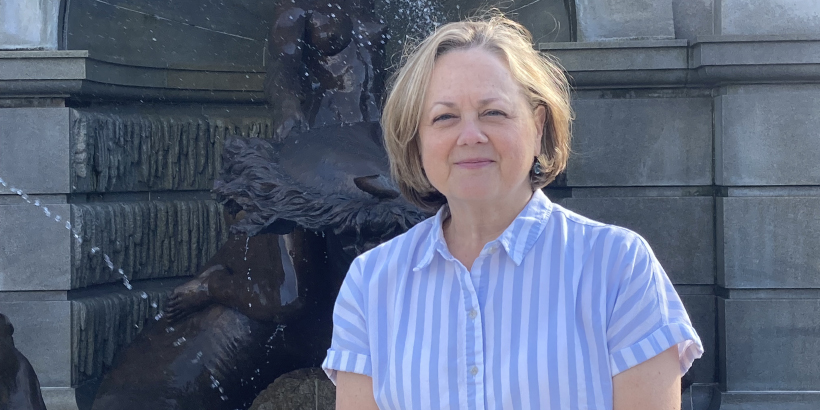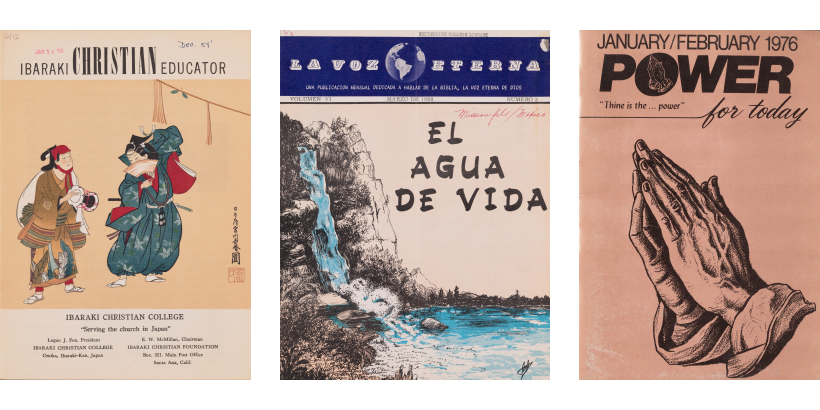Payson Library Practicum Focuses on Restoration Movement Publications

"I hear and I forget. I see and I remember. I do and I understand." -Confucius
The proverb above, attributed to Confucius, aptly conveys a widely held convention that learning comes best through doing. Every so often, a student or someone from the community will reach out to one of our librarians to propose a project that complements their academic studies. Lucy Perrin, who many of our readers know due to her deep connections to Pepperdine, was one such person looking to partner with the Libraries to enhance her studies through experiential learning. She is attending the University of North Texas and is close to earning a master of science in library science. Working with the Special Collections and Archives team, Perrin initiated a project to gain a better understanding of the Libraries' holdings of Restoration Movement publications.
The Libraries collection of Restoration Movement publications is around 600 titles and 15,000 items of unbound periodicals dating as far back as 1834. The Restoration Movement, also called the Stone-Campbell Movement, was the broader movement that led to the establishment of the Churches of Christ, of which Pepperdine is affiliated. The collection features the work of writers, editors, and publishers who were local church leaders, preachers, and missionaries. It is international in scope, and the materials document and trace the history of the movement and the history of its theological thought and practice.
Currently, periodicals can be found in a finding aid hosted by the Online Archive of California, but to make it easier for researchers browsing the immense collection, Perrin took on the challenge of organizing materials by subject. Perrin also researched other universities that house materials from the Restoration Movement, laying the framework for a shared digital or print resource to be produced in the future. For Perrin, reaching out to these organizations was helpful in getting a sense of the scope of materials and problems regarding access to them.

Because the Stone-Campbell Restoration movement has no central archive, these materials are scattered across many educational institutions and libraries, and it falls to librarians to preserve these materials and to provide access. Perrin talked about the challenges she faced with the project. "Many of these libraries are very small, and they don't have enough resources to make these periodicals accessible," she said. "Some institutions don't even have complete lists of their holdings, and there has never been a uniform description of its periodicals. Cataloging challenges abound with these materials, impacting their accessibility to researchers."
Pepperdine Libraries Churches of Christ Heritage Center director Jerry Rushford was delighted with the work of Perrin. "Lucy came to this task with a contagious excitement to research her own heritage in Churches of Christ, and her collaboration with Restoration history scholars at Abilene Christian University, Harding School of Theology, Lincoln Christian University, and the Disciples of Christ Historical Society demonstrated a passionate commitment to producing a significant document," said Rushford. "After two months of comprehensive research, she left us with a 19-page Restoration Movement publications collection report that is not only a model for how to create and build a practicum project, but is, more importantly, a valuable document that will guide Pepperdine historians and researchers for years to come."
For dean of Libraries Mark Roosa, the impact of the project is far-reaching. "By achieving a better understanding of our collection, Pepperdine positions itself to sustain and strengthen its historic ties to the Churches of Christ while exploring more opportunities to collaborate with our sister institutions," said Roosa. "We are extremely grateful to Lucy for taking on this important project."